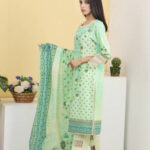
So, sustainable fashion. Honestly, it sounds way fancier than it really is. I used to think it meant wearing hemp from head to toe and spending my life in uncomfortable, itchy clothes. I tried going “all-organic” for a week once… ended up in pants that felt like sandpaper and a sweater that made me itch so bad I almost cried. Not fun.
The first thing I learned: buy less crap. Fast fashion is basically a trap. You see a $10 shirt online and think, “Yes, this is destiny!” Two days later, your closet looks like a small boutique exploded and nothing matches. I’ve been there, trust me. My first step to a greener wardrobe was admitting I didn’t need 17 black t-shirts. Shocking, right?
Next: invest in stuff that lasts. Timeless pieces, neutral colors, classic cuts. Jeans that fit right, a plain white t-shirt, a little black dress—stuff that won’t go out of style in a month. Bonus: they survive laundry disasters and random coffee spills (trust me, I’ve had both). My favorite sweater from 2017? Still rocking it. Survived two accidental bleach spots and a minor flame incident from a candle. True story.
Thrifting is basically a treasure hunt, if you like random luck and occasionally weird smells. I once found a cashmere sweater for $8. Eight dollars. I still wear it, still love it, and still can’t believe my luck. Second-hand shopping keeps clothes out of landfills and saves money. Win-win.
Also, take care of your clothes. Wash less, fix holes, avoid the dryer. I once tossed a perfectly good t-shirt in the dryer and ruined it. Instant regret. Seriously, caring for what you have goes a long way toward a sustainable wardrobe. Your clothes have stories—don’t toss them at the first coffee spill.
Fabric choice matters too. Cotton, linen, hemp, recycled stuff—they’re better than polyester, unless it’s recycled. Fun fact: one kilo of cotton takes around 10,000 liters of water to produce. Yeah, basically like me crying over student loans, times a thousand.
Support brands that actually give a crap. If a company says “sustainable” but can’t show certifications or proof, it’s probably greenwashing. TikTok, Reddit, Instagram—surprisingly useful. Random people online will call out sketchy brands for you. Saved me from at least three “eco-friendly” scams.
Another tip: swap, borrow, or rent. Weddings, parties, random one-off events—rent a dress, borrow from a friend, or do a clothes swap. I’ve done swaps with friends and ended up with pieces I’d never pick for myself but now love. It’s like a fashion lottery where everyone wins.
Look, sustainable fashion isn’t about perfection. You don’t need a 100% eco-friendly closet. Start small, buy thoughtfully, care for what you have, and forgive yourself if you slip and buy a fast fashion item once in a while. I do it. We all do it.
The point is, little choices add up. Over time, your closet can be stylish, last longer, and be a tiny bit kinder to the planet. Also, there’s something oddly satisfying about rocking a thrifted cashmere sweater that cost less than your morning latte.










